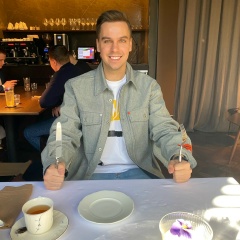ОСНОВА ОСНОВ.
Руки, ноги... Главное - хвост!
Уже недели две присаживаюсь для написания качественного поста про самое, на мой взгляд, важное - ПОЛОЖЕНИЕ ТЕЛА ВСАДНИКА В СЕДЛЕ.
И, как отдельный пункт - ПОЛОЖЕНИЕ ТАЗА.
Потому как это то место откуда "ноги растут" в прямом и переносном смысле. Слишком важно, чтобы об этом молчать.
Именно от этой детали будет зависеть:
- пользу или вред принесет верховая езда;
- хорошо или плохо будет двигаться ваша лошадь;
- будут ли удаваться элементы и упражнения во время езды;
- исправите ли вы проблемы осанки, или, наоборот, усугубите.
И тут я опять сталкиваюсь с тем, что всадник с головой уже давно нашел 100 годных статей, и все понял.
Или нашел хорошего тренера, и все понял.
А тот всадник, который не искал ни того, ни другого, и проблему на осознанный уровень не вывел. И о чем там, собственно, писать...
Да и все умные слова давно сказаны, написаны, и даже выложены в виде фильма-мультипликации. Тут каждый найдет свое.
Поэтому мой текст по этому поводу будет краток.
ЕСЛИ ВЫ СОМНЕВАЕТЕСЬ, что ваш таз во время езды верхом находится в правильном положении, проверьте это простым упражнением.
1. Встаньте на землю, ноги на ширине плеч. Так, как вы обычно стоите или ходите. ОСОЗНАЙТЕ положение таза и поясницы. Таз смотрит седалищными костями вниз. Поясница не прогнута. Копчик направлен вниз.
Расставьте ноги на ширину лошади, согните колени. Поясница должна остаться ровной и ненапряженной, положение копчика и седалищных костей не меняется.
2. Сев в седло, осознайте положение поясницы, седалищных костей и копчика.
Ничего не должно измениться!
На шагу, строевой и учебной рыси, манежном галопе. В момент, когда вы не досылаете и не тормозите вашу лошадь. В любой момент, когда ваш зад оказывается в седле.
Вас не должно покидать ощущение, что вы не сидите на коне, а стоите на земле с конем между ног.
!!! Любые размахивания хвостом, тазом и поясницей мешают лошади, а так же могут привести вас на операционный стол.
Надеюсь, этих аргументов вполне достаточно для того, чтобы почитать очень умные и хорошие статьи, посмотреть правильное видео, и нанять грамотного тренера.
А так же взять ответственность за положение своего хвоста в свои же руки.
А все по тому, что верховая езда - это, прежде всего, работа над собой, над своими ощущениями, над своим телом.
И об этом будет совсем другая история...
P.S.
Очень годные статьи:
http://www.horse-school.ru/teoriya/08.htm
https://vk.com/@horses_centre_ratomka-vredim-ne-zamechaya-pyat-sereznyh-oshibok-vsadnika
Очень годное видео:
https://vk.com/videos88936?z=video88936_152579516%2Fpl_88936_-2
https://vk.com/videos88936?z=video-51641475_456239040%2Fpl_88936_-2
Если есть действительно неразрешенные вопросы по этой теме, всегда велкам!
Любые консультации в реальном и виртуальном пространстве.
Руки, ноги... Главное - хвост!
Уже недели две присаживаюсь для написания качественного поста про самое, на мой взгляд, важное - ПОЛОЖЕНИЕ ТЕЛА ВСАДНИКА В СЕДЛЕ.
И, как отдельный пункт - ПОЛОЖЕНИЕ ТАЗА.
Потому как это то место откуда "ноги растут" в прямом и переносном смысле. Слишком важно, чтобы об этом молчать.
Именно от этой детали будет зависеть:
- пользу или вред принесет верховая езда;
- хорошо или плохо будет двигаться ваша лошадь;
- будут ли удаваться элементы и упражнения во время езды;
- исправите ли вы проблемы осанки, или, наоборот, усугубите.
И тут я опять сталкиваюсь с тем, что всадник с головой уже давно нашел 100 годных статей, и все понял.
Или нашел хорошего тренера, и все понял.
А тот всадник, который не искал ни того, ни другого, и проблему на осознанный уровень не вывел. И о чем там, собственно, писать...
Да и все умные слова давно сказаны, написаны, и даже выложены в виде фильма-мультипликации. Тут каждый найдет свое.
Поэтому мой текст по этому поводу будет краток.
ЕСЛИ ВЫ СОМНЕВАЕТЕСЬ, что ваш таз во время езды верхом находится в правильном положении, проверьте это простым упражнением.
1. Встаньте на землю, ноги на ширине плеч. Так, как вы обычно стоите или ходите. ОСОЗНАЙТЕ положение таза и поясницы. Таз смотрит седалищными костями вниз. Поясница не прогнута. Копчик направлен вниз.
Расставьте ноги на ширину лошади, согните колени. Поясница должна остаться ровной и ненапряженной, положение копчика и седалищных костей не меняется.
2. Сев в седло, осознайте положение поясницы, седалищных костей и копчика.
Ничего не должно измениться!
На шагу, строевой и учебной рыси, манежном галопе. В момент, когда вы не досылаете и не тормозите вашу лошадь. В любой момент, когда ваш зад оказывается в седле.
Вас не должно покидать ощущение, что вы не сидите на коне, а стоите на земле с конем между ног.
!!! Любые размахивания хвостом, тазом и поясницей мешают лошади, а так же могут привести вас на операционный стол.
Надеюсь, этих аргументов вполне достаточно для того, чтобы почитать очень умные и хорошие статьи, посмотреть правильное видео, и нанять грамотного тренера.
А так же взять ответственность за положение своего хвоста в свои же руки.
А все по тому, что верховая езда - это, прежде всего, работа над собой, над своими ощущениями, над своим телом.
И об этом будет совсем другая история...
P.S.
Очень годные статьи:
http://www.horse-school.ru/teoriya/08.htm
https://vk.com/@horses_centre_ratomka-vredim-ne-zamechaya-pyat-sereznyh-oshibok-vsadnika
Очень годное видео:
https://vk.com/videos88936?z=video88936_152579516%2Fpl_88936_-2
https://vk.com/videos88936?z=video-51641475_456239040%2Fpl_88936_-2
Если есть действительно неразрешенные вопросы по этой теме, всегда велкам!
Любые консультации в реальном и виртуальном пространстве.
BASIS OF BASES.
Hands, feet ... The main thing is the tail!
For two weeks now I’ve been sitting down to write a high-quality post about the most important, in my opinion, important thing - THE POSITION OF THE RIDER'S BODY IN THE SEAT.
And, as a separate item - POSITION.
Because this is where the "legs grow" in the literal and figurative sense. Too important to be silent about this.
It will depend on this detail:
- horse riding will benefit or harm;
- your horse will move good or bad;
- will the elements and exercises work out while riding;
- whether you correct posture problems, or, conversely, exacerbate.
And here again I come across the fact that the rider with his head has long found 100 suitable articles, and I understood everything.
Or I found a good coach, and I understood everything.
But the rider who did not look for either one or the other, and the problem did not bring to a conscious level. And what is there, in fact, to write about ...
And all the clever words have been said, written, and even laid out in the form of an animated film. Here everyone will find his own.
Therefore, my text on this subject will be brief.
IF YOU DOUBT that your pelvis is in the correct position while riding, check this with a simple exercise.
1. Stand on the ground, feet shoulder width apart. The way you usually stand or walk. UNDERSTAND the position of the pelvis and lower back. The pelvis looks down with its ischial bones. The loin is not bent. The tailbone is directed down.
Spread the legs to the width of the horse, bend the knees. The loin should remain flat and relaxed, the position of the coccyx and ischial bones does not change.
2. Once in the saddle, be aware of the position of the lower back, sciatic bones and tailbone.
Nothing needs to change!
At the step, drill and training lynx, arena gallop. At the moment when you do not send and do not brake your horse. At any time when your butt is in the saddle.
You should not leave the feeling that you are not sitting on a horse, but standing on the ground with a horse between your legs.
!!! Any waving of the tail, pelvis and lower back interferes with the horse, and can also lead you to the operating table.
I hope these arguments are enough to read very smart and good articles, watch the right video, and hire a competent trainer.
And also take responsibility for the position of your tail in your own hands.
And all by the fact that horseback riding is, first of all, work on oneself, on one’s feelings, on one’s body.
And this will be a completely different story ...
P.S.
Very useful articles:
http://www.horse-school.ru/teoriya/08.htm
https://vk.com/@horses_centre_ratomka-vredim-ne-zamechaya-pyat-sereznyh-oshibok-vsadnika
Very good video:
https://vk.com/videos88936?z=video88936_152579516%2Fpl_88936_-2
https://vk.com/videos88936?z=video-51641475_456239040%2Fpl_88936_-2
If there are really unresolved questions on this topic, always feel free to!
Any consultations in real and virtual space.
Hands, feet ... The main thing is the tail!
For two weeks now I’ve been sitting down to write a high-quality post about the most important, in my opinion, important thing - THE POSITION OF THE RIDER'S BODY IN THE SEAT.
And, as a separate item - POSITION.
Because this is where the "legs grow" in the literal and figurative sense. Too important to be silent about this.
It will depend on this detail:
- horse riding will benefit or harm;
- your horse will move good or bad;
- will the elements and exercises work out while riding;
- whether you correct posture problems, or, conversely, exacerbate.
And here again I come across the fact that the rider with his head has long found 100 suitable articles, and I understood everything.
Or I found a good coach, and I understood everything.
But the rider who did not look for either one or the other, and the problem did not bring to a conscious level. And what is there, in fact, to write about ...
And all the clever words have been said, written, and even laid out in the form of an animated film. Here everyone will find his own.
Therefore, my text on this subject will be brief.
IF YOU DOUBT that your pelvis is in the correct position while riding, check this with a simple exercise.
1. Stand on the ground, feet shoulder width apart. The way you usually stand or walk. UNDERSTAND the position of the pelvis and lower back. The pelvis looks down with its ischial bones. The loin is not bent. The tailbone is directed down.
Spread the legs to the width of the horse, bend the knees. The loin should remain flat and relaxed, the position of the coccyx and ischial bones does not change.
2. Once in the saddle, be aware of the position of the lower back, sciatic bones and tailbone.
Nothing needs to change!
At the step, drill and training lynx, arena gallop. At the moment when you do not send and do not brake your horse. At any time when your butt is in the saddle.
You should not leave the feeling that you are not sitting on a horse, but standing on the ground with a horse between your legs.
!!! Any waving of the tail, pelvis and lower back interferes with the horse, and can also lead you to the operating table.
I hope these arguments are enough to read very smart and good articles, watch the right video, and hire a competent trainer.
And also take responsibility for the position of your tail in your own hands.
And all by the fact that horseback riding is, first of all, work on oneself, on one’s feelings, on one’s body.
And this will be a completely different story ...
P.S.
Very useful articles:
http://www.horse-school.ru/teoriya/08.htm
https://vk.com/@horses_centre_ratomka-vredim-ne-zamechaya-pyat-sereznyh-oshibok-vsadnika
Very good video:
https://vk.com/videos88936?z=video88936_152579516%2Fpl_88936_-2
https://vk.com/videos88936?z=video-51641475_456239040%2Fpl_88936_-2
If there are really unresolved questions on this topic, always feel free to!
Any consultations in real and virtual space.
У записи 14 лайков,
0 репостов,
274 просмотров.
0 репостов,
274 просмотров.
Эту запись оставил(а) на своей стене Александра Румянцева

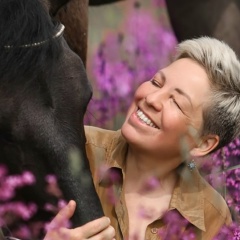


















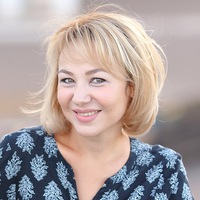








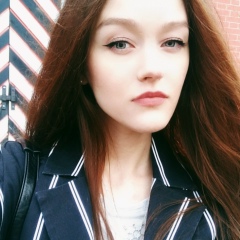

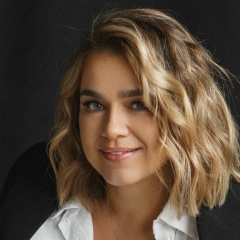
![Марина Любас [ и ] Марина Любас [ и ]](https://sun9-24.vkuserphoto.ru/s/v1/ig2/11VHwOrgQnrdJrHkTCP1FRarX6LeNGJaD961cxQn9llDZ0o2GkEhASZQJNB2LQETC9JimikBI0XGXPr4IMYBj0F_.jpg?quality=95&crop=0,317,1920,1920&as=32x32,48x48,72x72,108x108,160x160,240x240,360x360,480x480,540x540,640x640,720x720,1080x1080,1280x1280,1440x1440&ava=1&cs=200x200)

